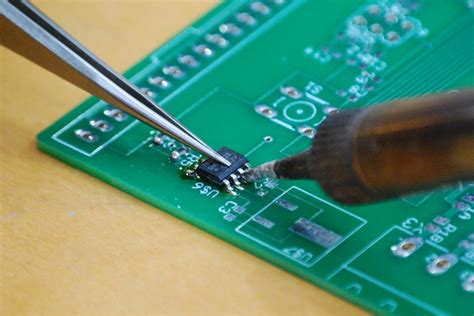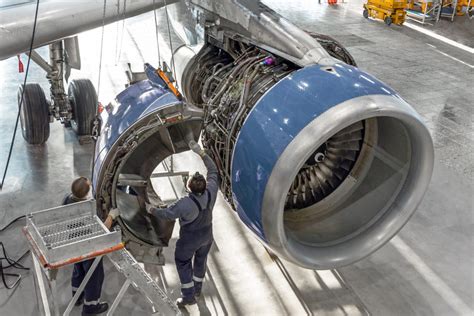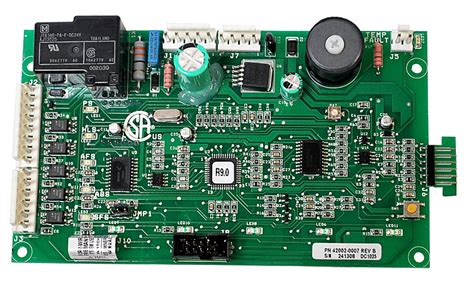Unlocking Quality: Discover the Best PCB Assembly Services
Key Takeaways
Understanding the landscape of PCB assembly (or PCBA) is vital for anyone involved in electronics manufacturing. It encompasses a series of processes that transform a design into a functional circuit board, thus making it an essential aspect of modern technology. Quality in pcb assembly is not just desirable; it is imperative for ensuring reliability and longevity in electronic products. Various factors play a pivotal role in selecting the right service provider, including technical expertise, state-of-the-art facilities, and adherence to industry standards. Moreover, the best pcb assembly services will typically offer comprehensive solutions tailored to specific project requirements, ensuring that both small runs and large-scale productions receive the attention they deserve. By recognizing the importance of quality control throughout every stage of production, companies can prevent potential failures and enhance customer satisfaction. With advancements in technology influencing the field, innovative techniques are now available to boost efficiency and reduce costs without compromising quality. The benefits of choosing committed and experienced professionals for your pcba needs can be seen in the testimonials from countless satisfied clients who have experienced unmatched results with reputable assemblers. Embracing these insights can significantly impact your project’s success and pave the way for future advancements in electronic manufacturing.
Understanding PCB Assembly: Key Concepts and Importance
PCB assembly, often abbreviated as PCBA, is a critical step in the manufacturing of electronic devices, serving as the backbone of modern technology. This process involves assembling various electronic components onto a printed circuit board (PCB) to create functional electronic products. Understanding PCB assembly is vital as it ensures the reliability and performance of the final device. The assembly process encompasses several key concepts, including design specifications, component placement, and soldering techniques. Each component must be precisely placed and securely attached to ensure optimal functionality and durability. The importance of high-quality pcba cannot be overstated; deficiencies in this stage can lead to device failures or malfunctions, impacting overall user experience. Furthermore, advancements in technology have led to innovative techniques that enhance the efficiency and accuracy of PCB assembly, enabling manufacturers to meet stringent quality standards while reducing production costs. Recognizing these key concepts not only empowers businesses to make informed choices but also emphasizes the importance of partnering with reliable services that prioritize excellence in their pcba processes.
Criteria for Choosing the Best PCB Assembly Services
When it comes to selecting the best PCB assembly services, several crucial criteria should guide your decision-making process to ensure you achieve high-quality results. Firstly, look for experience and reputation in the industry. A company that has been providing PCB assembly services for an extended period is likely to have a wealth of knowledge and a proven track record. Additionally, check for customer reviews and testimonials to gauge their reliability.
Quality control measures are another vital aspect to consider. Companies that implement rigorous testing protocols throughout their PCBA process can help prevent defects and ensure that your products meet required specifications. It’s essential to review their certifications, such as ISO 9001, which demonstrates adherence to international quality management standards.
Next, evaluate the range of services offered by potential providers. Some may specialize in specific industries or types of assemblies, while others might offer a more comprehensive set of PCB assembly solutions, including prototyping and full-scale production. This breadth can be crucial if your project evolves or requires enhancements in the future.
Lastly, consider the pricing structure and turnaround times. While cost should never compromise quality, competitive pricing is essential for maintaining budget constraints in any electronic manufacturing project. A transparent pricing model with no hidden fees will instill confidence as you move forward with your chosen service provider.
| Criteria | Key Points |
|---|---|
| Experience and Reputation | Proven track record and industry longevity |
| Quality Control Measures | Rigorous testing protocols; ISO certifications |
| Range of Services | Specializations and flexibility in offerings |
| Pricing Structure | Competitive pricing; transparency without hidden fees |
By carefully evaluating these criteria, you can ensure that you choose a service provider who can deliver outstanding results for your PCBA needs while maintaining reliability and craftsmanship throughout the assembly process.
Top PCB Assembly Companies to Consider
When looking to enhance your electronic projects, the choice of the right PCB assembly service can make a significant difference in overall performance and reliability. There are various pcba companies that stand out in the industry due to their commitment to quality and innovation. Some of the best PCB assembly companies offer a full range of services, from prototype development to full-scale production, ensuring they meet diverse customer needs. Firms such as Company A provide exceptional support throughout the assembly process, integrating cutting-edge technology with seasoned expertise. Meanwhile, Company B specializes in rapid prototyping and is known for its swift turnaround times without compromising on quality. It’s essential to assess potential partners not just on price but also on their track record for reliability, communication, and customer satisfaction. Engaging with these top players in the field can help you unlock the high standards required for successful electronic manufacturing, paving the way for your project’s success while championing pcba excellence and value.
The Process of PCB Assembly: Step-by-Step Guide
When embarking on the journey of PCB assembly, understanding the process is crucial to achieving high-quality results. The PCB assembly process typically begins with the design phase, where engineers create a detailed schematic and layout for the printed circuit board. Next, components are selected based on functionality and compatibility, which will be placed onto the PCB. The following step involves sourcing these components, ensuring that each part meets specific standards for reliability and performance.
Once the materials are gathered, the actual assembly can commence. This usually includes soldering techniques such as surface mount technology (SMT) or through-hole technology. SMT is often preferred for its efficiency and ability to accommodate high-density placements without compromising functionality. After soldering, the assembled PCBs undergo a thorough inspection which may involve automated optical inspection (AOI) and functional testing to ensure that each board operates correctly.
The final stages of PCBA involve cleaning and packaging, preparing each unit for distribution or integration into larger systems. This meticulous process is what distinguishes quality PCB assembly from lesser options in the market, emphasizing reliability and excellence in electronic manufacturing projects. By understanding these steps, businesses can better navigate their options when selecting partners for their PCB assembly needs.
Quality Control in PCB Assembly: Ensuring Reliability
Quality control is a pivotal aspect of pcb assembly, directly influencing the reliability and performance of electronic devices. Effective quality control measures in the pcba process encompass a series of rigorous inspections and tests to ensure that each component and assembly adheres to the highest standards. This begins with meticulous evaluation during the sourcing of materials, where components must meet specified tolerances and certifications. Following this, the pcb assembly process itself should incorporate various checks, such as automated optical inspections (AOI) and functional testing, to detect defects early.
“A robust quality control framework not only minimizes errors but also enhances customer confidence in the final product.”
Furthermore, regular audits and adherence to international standards such as IPC (Institute of Printed Circuits) guidelines can significantly elevate the quality assurance process. By implementing stringent quality protocols, manufacturers can avoid costly recalls and ensure their products operate flawlessly in real-world applications. Investing in advanced technologies for real-time monitoring during the pcba phases can also lead to improved overall efficiency. Thus, understanding different facets of quality control in pcb assembly helps businesses maintain a competitive edge while delivering reliable electronics that meet customer expectations.
Innovations in PCB Assembly Technology
In the fast-evolving world of electronics, innovations in PCB assembly technology are reshaping how products are designed and manufactured. Recent advancements have introduced automated processes that enhance efficiency and accuracy in printed circuit board assembly (PCBA). These technologies enable manufacturers to achieve higher precision, reducing the likelihood of errors during the assembly process. The integration of robotics and smart systems has revolutionized traditional methods, allowing for meticulous handling of components that are increasingly miniature and complex. Moreover, the adoption of advanced materials is contributing to lighter, more durable PCBs, catering to a growing demand for energy-efficient devices. As manufacturers continue to invest in cutting-edge solutions, they not only improve production cycles but also significantly enhance the overall reliability of their final products. Staying abreast of these innovations is crucial for businesses looking to ensure quality and competitiveness in the ever-demanding market for electronic manufacturing.
Cost-Effective Solutions for High-Quality PCB Assembly
When it comes to pcb assembly, cost-effectiveness plays a crucial role in the decision-making process for engineers and manufacturers alike. To achieve high-quality PCBA while maintaining budgetary constraints, it is essential to evaluate several strategies. First, partnering with suppliers who offer bulk pricing can significantly reduce overall costs. Additionally, opting for standard design templates can streamline production and minimize errors, thereby saving on both time and resources. Another effective approach is selecting materials that provide the necessary reliability without inflating costs unnecessarily; sometimes, less expensive materials can yield satisfactory performance without sacrificing quality. Moreover, leveraging automation in the pcb assembly process not only enhances efficiency but also helps in maintaining consistent quality standards while reducing labor costs. Ultimately, organizations need to strike a balance between cost and quality to ensure a successful final product that meets all technical requirements and exceeds customer expectations in electronic manufacturing. Exploring these options allows businesses to maximize their resources, enabling them to produce exceptional pcba without breaking the bank.
Customer Testimonials: Experiences with Leading PCB Assemblers
When it comes to selecting the best PCB assembly services for your projects, customer testimonials provide invaluable insights into the reliability and quality of these providers. Clients often share their experiences with PCBA firms, highlighting both exceptional service and support as well as the technical expertise that meets their unique needs. Many customers emphasize the importance of effective communication throughout the PCB assembly process, noting that timely updates and transparency foster trust and confidence in their partners.
One client described a seamless experience with their chosen assembler: “From project initiation to delivery, every detail was handled with utmost professionalism. The quality of the final product exceeded our expectations and truly showcased their expertise in PCBA.” Another mentioned how a quick turnaround time was crucial for meeting tight deadlines, praising their assembler’s ability to deliver high-quality results without compromising on speed.
These testimonials also emphasize how leading PCB assembly companies maintain rigorous quality control measures. Customers frequently mention that a robust process ensures that every component is thoroughly tested before reaching them, which is critical for maintaining reliability in electronic manufacturing. Overall, these firsthand accounts illustrate not only the standard of excellence offered by top PCBA services but also the strong relationships built through commitment to client satisfaction.
Conclusion
In the ever-evolving world of electronics, understanding the nuances of pcb assembly is crucial for ensuring the success of your projects. The combination of precise manufacturing processes and quality components, often referred to as pcba, plays a vital role in delivering reliable and effective electronic solutions. The best pcb assembly services are characterized by their adherence to stringent quality control measures, timely delivery, and customer satisfaction. By aligning your project needs with top-tier assembly companies, you not only enhance the performance of your electronic devices but also reduce potential delays and costs associated with poor quality or rework. Moreover, ongoing innovations in pcb assembly technology are paving the way for more efficient and cost-effective solutions that cater to a diverse range of applications, ensuring that businesses can maintain a competitive edge while delivering superior products. Thus, making informed choices when selecting pcb assembly services can unlock new opportunities for growth and technological advancement in your endeavors.
FAQs
What is PCB assembly?
PCB assembly, or PCBA, is the process of connecting electronic components to a printed circuit board (PCB). This process is essential for creating functional electronic devices, ensuring that components such as resistors, capacitors, and chips are properly placed and soldered onto the board.
Why is quality important in PCB assembly?
Quality in PCB assembly is crucial because it directly impacts the reliability and performance of the final product. A well-assembled PCB ensures that electrical signals flow correctly, reducing the risk of malfunctions or failures in electronic devices.
How do I choose a PCB assembly service?
When selecting a PCB assembly service, consider factors such as their experience, customer reviews, quality control processes, and technological capabilities. Look for services that provide comprehensive support, from design to final testing.
What should I expect from a good PCB assembly process?
A reputable PCB assembly process should include detailed inspections and rigorous testing at various stages. This ensures that all components are correctly placed and soldered, addressing any potential issues before reaching the customer.
Are there cost-effective options available for high-quality PCB assembly?
Yes, many companies offer cost-effective solutions without compromising on quality. It’s essential to compare quotes and services offered by various providers to find an option that meets your budget while still ensuring reliability in the assembly of your PCBA.







